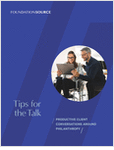I don’t usually comment on advertisements that appear in this magazine, having found over time that a policy of strict neutrality combined with a healthy dose of appreciation works very well, as a general rule.
But rules, as we know, are meant to be broken, if only occasionally. So, here goes.
The advertisement that gave rise to this exception is one that Prudential Financial ran in the Oct. 9 issue. It features what looks like the cover of a magazine whose title is ‘Underinsured Woman.’ Part of the copy reads: “Hot new magazine? No. Hot market. Yes.”
I think Prudential is onto something here. Over the last few years we have run special focus issues on Marketing to Women. By and large, most of the articles that appeared in those issues made the same point: This is a huge, still untapped market whose potential is virtually unlimited.
This is true even though in the last couple of decades the life insurance business has made strides in moving away from the male-centricity that characterized its selling and marketing efforts for virtually its entire history.
This is mainly due to the force of reality: How can a business continue to look at males as “the breadwinner” when in so many families it is an absolute necessity for both the husband and the wife to work in order to make ends meet, never mind advancing up the economic ladder.
And that is just looking at the prototypical “Father Knows Best” scenario where there is a husband and wife and one-and-a-half kids. This scenario has long since lost its dominance. For a long time now we’ve been watching reruns of “Honey, I Shrunk the Nuclear Family.”
Many women nowadays choose to live on their own and, if they marry at all, they tend to marry later than did women even 30 years ago. Many women are alone after a divorce, and in the case of older women, after the death of a spouse.
Many women now are small business owners; indeed, by some accounts, women-owned businesses are the fastest growing segment of the small business market.
Yet, despite this rise in entrepreneurship, lots of women still by and large maintain many of their traditional roles–homemaker and caregiver, among them.








 October 16, 2005 at 04:00 PM
October 16, 2005 at 04:00 PM










